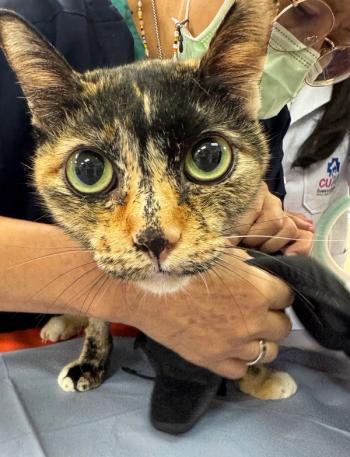
Treatment protocols (Proceedings)
Treatment protocols are often the means by which veterinarians guide the treatments given to sick cattle when detection, examination, and treatments are all conducted by farm personnel.
Treatment protocols are often the means by which veterinarians guide the treatments given to sick cattle when detection, examination, and treatments are all conducted by farm personnel. The development of specific protocols requires the support of owners and the cooperation of workers. Accepting the use of fixed treatment regimes is sometimes a challenge to sell to clients. However, creating plans for the diseases that will certainly occur can make the management of common health problems very straightforward. It is, of course, much easier to stick within the guidelines provided by drug labels and avoid extra-label drug use whenever possible.
The written protocol can only be helpful if the personnel have been trained to correctly examine and define the conditions they are being expected to treat. This usually will provide repeated opportunities for training sessions. In addition, working with the hospital crew on a regular basis will enable evaluation of their work and support for the recording of accurate disease data.
Some examples of protocols follow and should be considered just as potential approaches to specific areas of disease management.
Calf Treatment Protocol
Remember to record all treatments – drug treatments under 1)diarrhea or 2)respiratory, or 3)other (joints, navel)
1. Watery scours temp less than 103.5, calf still alert and strong;
a) Thirty to 45 minutes before regular feeding time give two quarts of electrolytes by bottle or tube feed if necessary
b) Follow with regular milk feeding at regular time
c) If calf is normally provided with water after meals, substitute 2 quarts electrolytes for the plain water
2. Calf is slightly dehydrated, (skin stays tented when pinched on upper eyelid or neck)
a) Give 2 qt warm electrolytes by bottle or tube if won't drink
b) Repeat electrolytes 3 times in 24 hr
c) Feed at least 2 quarts of milk in 24 hr
d) Repeat everything next day if needed
3. Calf is very dehydrated, (sunken eyes and cold mouth) with no suckle or calf is unable to rise
a) Give 5 liters Plasmalyte IV through a 14 gauge catheter in the jugular vein over 3 to 5 hours. Begin as fast as fluid will run and slow the rate after about 1.5 liters to 2 drops per second. At 10 drops per ml, 2 drops per second will deliver 720 ml in one hour. .
b) Add to the 5 liter bag 250 milliequivalents of bicarb (250 ml of 8.4% solution) (50 ml per liter)
c) Add to the 5 liter bag 150 ml of 50% dextrose (30 ml per liter)
d) After all the fluid is in the calf, close off the solution administration set but leave the catheter in for 24 hours in case the calf needs more IV fluids; this can be done at the next feeding if no one will be available to close the catheter earlier
e) Switch to oral electrolytes when calf is able to stand and suck
f) Continue to offer milk at each feeding
g) Give Excenel for 3 days
4. Bloody scours
a) Provide electrolytes as in part 1
b) If depressed or temp >103.5, give Excenel for at least 3 days
c) Collect and refrigerate manure sample for possible Salmonella culture
6. Temperature above 103.5, no respiratory signs
a) Check navel and joints for swelling - if present start Nuflor and have vet check for possible additional treatments
b) Give Nuflor until temperature falls below 103.5 for 48 hours (max 4 treatments)
7. Drinking less than half of her milk
a) If calf otherwise strong and alert, without fever or scours, note low intake with colored clothes pin - do not treat
b) If calf that is otherwise normal drinks less than 1 quart for three feedings, tube feed two quarts milk and ask for veterinary evaluation
8. Respiratory problems (first sign is always depression, later heavy breathing, drooping ear, snotty nose, cough)
a) Take temperature – no treatment unless >103 in winter and 103.5 in summer
b) Give Nuflor for 3 treatments or Micotil for 2 treatments (6days)
c) Recheck temperature, if still high switch to other drug
d) If one ear droops treat with LA-200 every other day and Tylan every day for 6 days (possible mycoplasma problem)
Treatment Protocol For Mastitis
Goals of mastitis treatment are to:
1. Minimize the amount of abnormal milk put in the bulk tank,
2. Return quarters and cows to normal as quickly and effectively as possible
3. Maximize the sale of wholesome milk
4. Minimize the pain and suffering of mastitis
5. Control the risk of drugs entering the food supply
Collect and freeze a labeled sample from the mastitic quarter.
Follow all recommended milk and slaughter withholding times.
Identify treated cows.
Record treatments.
Newsletter
From exam room tips to practice management insights, get trusted veterinary news delivered straight to your inbox—subscribe to dvm360.






